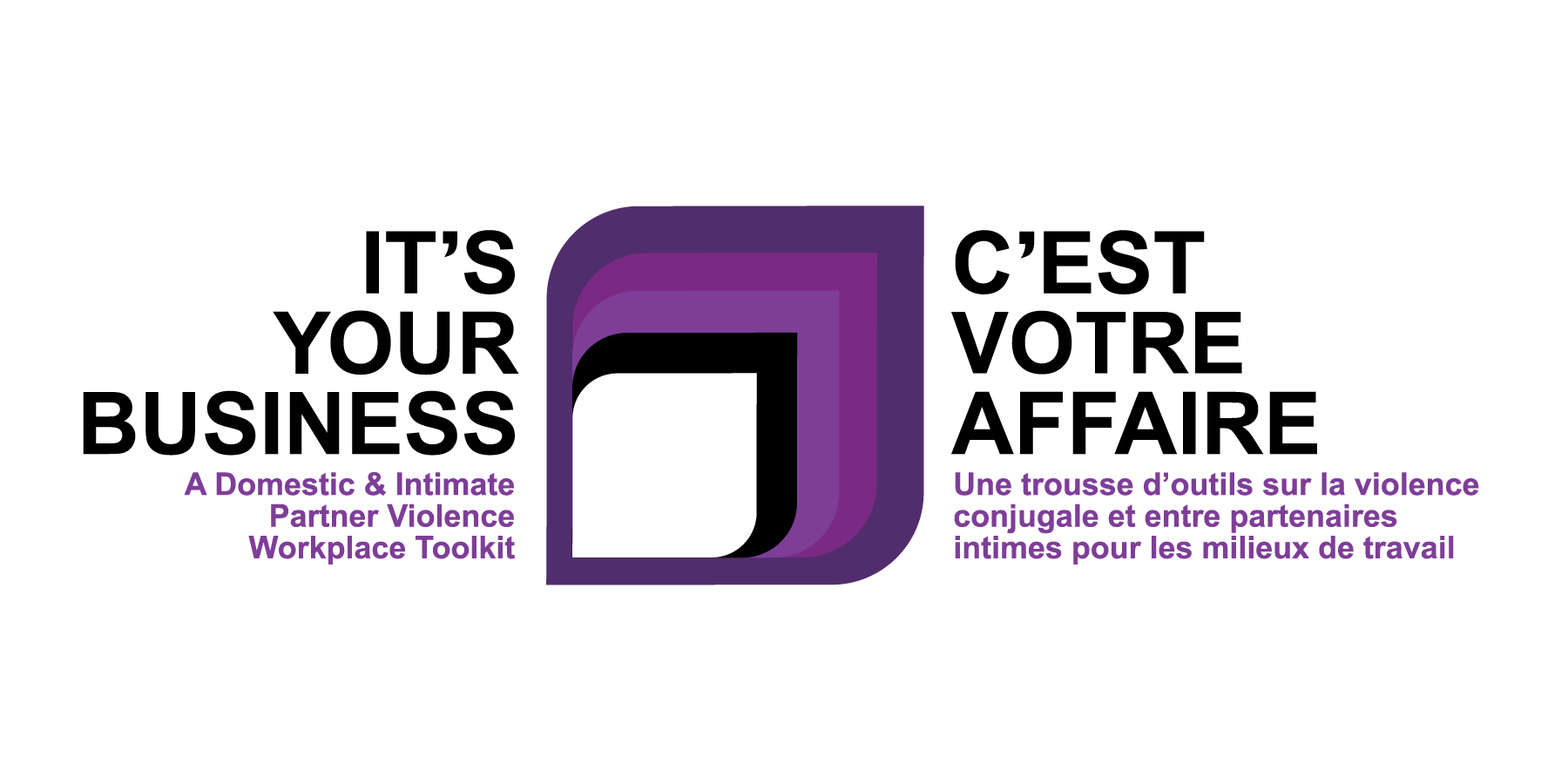What is Domestic/Intimate Partner Violence (DIPV)?
Domestic/intimate partner violence (DIPV) is any form of abuse, mistreatment, or neglect committed by a current or former intimate partner, a family member or member of a household, or a person upon whom the victim/survivor depends (such as a caregiver). It generally leads to a pattern of violent, threatening, dominating, coercive, or controlling behaviour.
Intimate Partner Violence (IPV) specifically refers to a situation in which a person who is currently or was previously in an intimate personal relationship (e.g. spouse, dating partner) abuses the other member of the relationship.
Other terms that are commonly used interchangeably with domestic or intimate partner violence include family violence, wife abuse, spousal abuse, dating violence, emotional control, and so on. While there are nuances to each one, the same principles generally apply when responding to other forms of DIPV in the workplace. DIPV can include many different forms of abuse, which are defined below.
Physical abuse: Any form of physical harm or threats to cause harm to the victim or their loved ones. Some forms of physical abuse include slapping, punching, kicking, choking, and the use of weapons.
Psychological abuse: Also referred to as emotional or verbal abuse. Some examples include put-downs, name-calling, jealous and controlling behaviour, attempting to damage the victim’s reputation, constant monitoring and checking in, gaslighting, and isolation from family or friends.
Sexual abuse: Unwanted touching or sexual activity of any kind. Some other forms of sexual abuse includes control over birth control, forced pregnancies or abortions, the transmission of sexually transmitted infections (STIs), and sharing sexually explicit photos without consent.
Financial abuse: Using finances to control or demean the victim. Examples include forcing the victim to hand over their pay cheque or benefits, denying the victim access to bank accounts, giving the victim an “allowance”, damaging the victim’s credit, and controlling whether or how much the victim works.
Spiritual abuse: Using the victim’s spiritual or religious beliefs to control or demean them, preventing the victim from practicing their spiritual or religious beliefs, or forcing the victim to convert to specific spiritual/religious beliefs.
Please note: the word “victim” is used throughout our toolkit where the term “survivor” could also be used to describe people subjected to domestic or intimate partner violence. While some identify as surviving the experience and others, as being victimized, we respectfully acknowledge that some people subjected to abuse do not relate to either term.
DIPV can also include withholding or controlling access to food, clothing, medical attention, shelter, transportation, or other necessities of life.
Who are the victims?
DIPV can occur in any relationship, with people of any gender identity, sexual orientation, culture, religion, education, age, socioeconomic status, and ability. DIPV does not discriminate.
However, data from Statistics Canada show that, while men and women report physical violence in intimate relationships at similar rates, women are twice as likely as men to report the most severe forms of violence, including being beaten, choked, threatened with a weapon, or sexually assaulted. Indigenous women, people with disabilities, and sexual minorities report the highest rates of victimization. See the fact sheet Respecting Employees’ Diversity to learn more about appropriate responses.
Children and youth exposed to DIPV
Even when they are not directly involved in the violence, other members of the family or household can be severely impacted by DIPV. This is particularly true for children and youth exposed to DIPV, who experience similar outcomes to children who have been victims of physical abuse.
DIPV exposure can impact children’s development and increase their risk for mental illness (such as depression, anxiety, and Post-Traumatic Stress Disorder (PTSD) and other social and behavioural challenges. Furthermore, research has found that when the victimized parent is at risk of being killed by the abuser, their children are as well. As such, it is important to support victims of DIPV in their role as parents and recognize that children and youth exposed to DIPV may face safety risks of their own.
For information on child abuse, please visit the Public Legal Education and Information Service of New Brunswick at http://www.legal-info-legale.nb.ca/en/child_abuse.
What is the difference between workplace violence and DIPV in the workplace?
Workplace violence is “the attempted or actual use of physical force against an employee, or any threatening statement or behaviour that gives an employee reasonable cause to believe that physical force will be used against the employee”. DIPV in the workplace, on the other hand, refers specifically to violence originating from the family, the home, or an intimate relationship that spills over into the work environment – whether in the form of a violent incident, or through the effects that experiencing DIPV has on an employee, on their work, and the associated safety risks.
Studies such as the General Social Survey (GSS) often measure incidents of physical violence without capturing broader patterns of coercion and control, frequency, severity, and effect. As a result, these studies include violent resistance to abuse (such as self-defence) and incidents of minor isolated violence in DIPV perpetration rates (Neilson, 2017).
See also:
